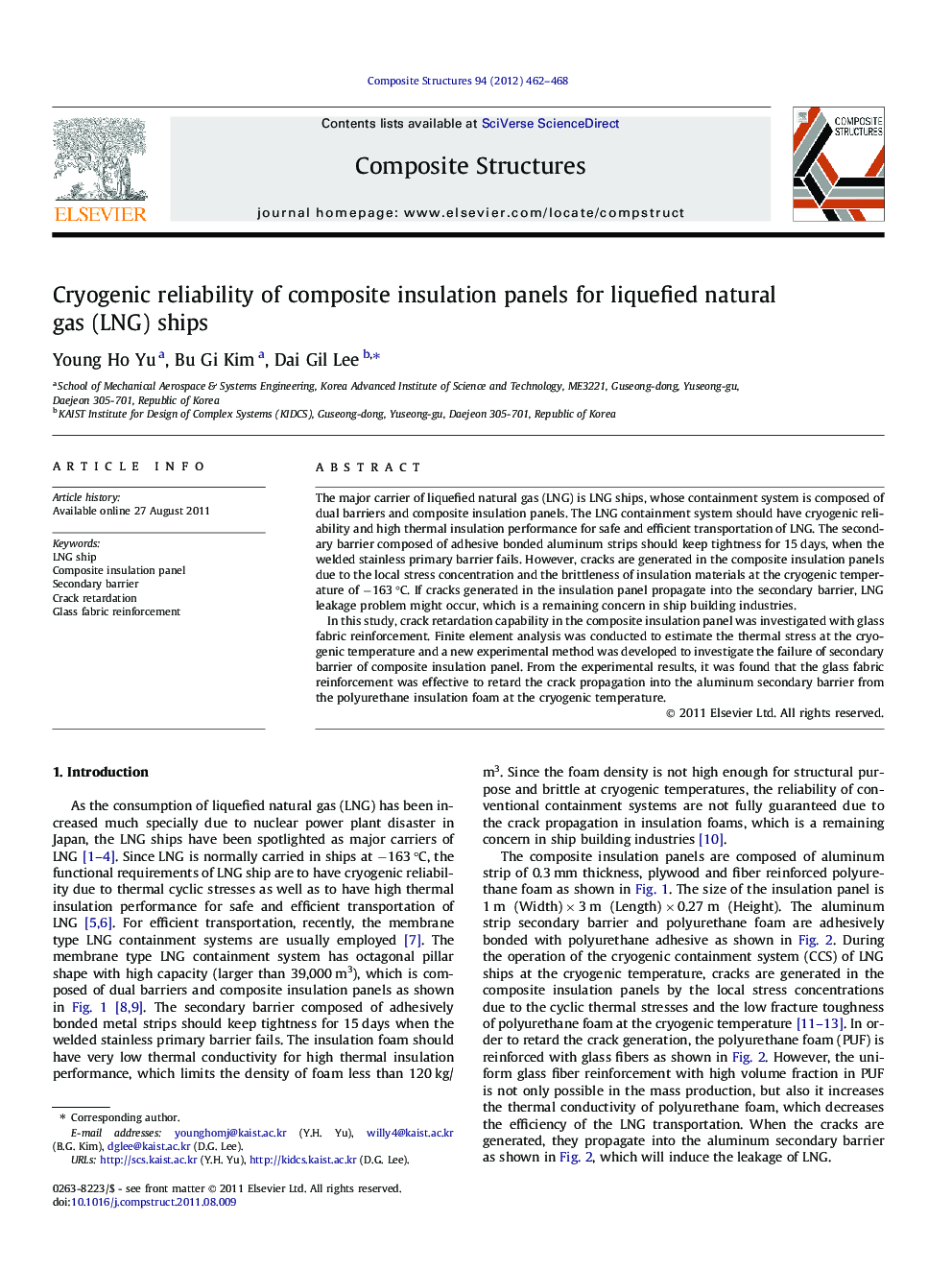| Article ID | Journal | Published Year | Pages | File Type |
|---|---|---|---|---|
| 252371 | Composite Structures | 2012 | 7 Pages |
The major carrier of liquefied natural gas (LNG) is LNG ships, whose containment system is composed of dual barriers and composite insulation panels. The LNG containment system should have cryogenic reliability and high thermal insulation performance for safe and efficient transportation of LNG. The secondary barrier composed of adhesive bonded aluminum strips should keep tightness for 15 days, when the welded stainless primary barrier fails. However, cracks are generated in the composite insulation panels due to the local stress concentration and the brittleness of insulation materials at the cryogenic temperature of −163 °C. If cracks generated in the insulation panel propagate into the secondary barrier, LNG leakage problem might occur, which is a remaining concern in ship building industries.In this study, crack retardation capability in the composite insulation panel was investigated with glass fabric reinforcement. Finite element analysis was conducted to estimate the thermal stress at the cryogenic temperature and a new experimental method was developed to investigate the failure of secondary barrier of composite insulation panel. From the experimental results, it was found that the glass fabric reinforcement was effective to retard the crack propagation into the aluminum secondary barrier from the polyurethane insulation foam at the cryogenic temperature.
► We conduct FEM analysis and experiment at cryogenic temperature to investigate the reliability of composite insulation panel for liquefied natural gas (LNG) ship. ► We estimate the thermal stress and strain of the panel by FEM analysis. ► We investigate the crack retardation capability of the panel with glass fabric reinforcement by developed experimental method. ► The glass fabric reinforcement with the proper volume faction will be effective to retard the crack propagation at cryogenic temperature.
